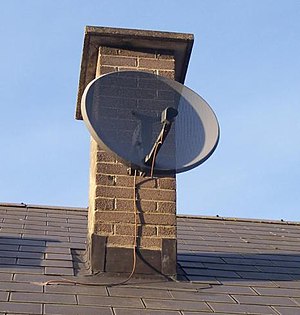Satellite television system has been used for some years and it has seen a lot of advancement in the purposes for which they can be utilized. Earlier satellite TV viewers used their dishes to discover different types of programming that was not meant for mass audiences. The dish and the receiving equipment facilitated the viewers to pick up foreign stations, live feeds between various broadcast stations, and a lot of other programs transmitted with the aid of satellites. In recent times most satellite TV customers receive their programming through a direct broadcast satellite provider, like DirecTV or Dish Network. The provider broadcasts the programs to the subscribers as packages. The provider aims to get to your television as many channels to your TV so as meet up to the competition with cable TV.
There are three primary types of satellite television usage: reception direct by the viewer, reception by local television partners, or reception by headends for allocation across terrestrial cable systems.
Direct to the viewer reception comprises of direct broadcast satellite or DBS and television receive-only or TVRO. Both of them are used for homes and businesses including hotels, etc.
Direct broadcast satellite, (DBS) also called ?Direct-To-Home? can also refer to the communications satellites themselves that bring DBS service or the actual television service. DBS systems are also known as ?mini-dish? systems. DBS uses the upper portion of the Ku band, as well as parts of the Ka band. Most of the DBS systems utilize the DVB-S standard for transmission. With Pay-TV services, the datastream is encrypted and needs proprietary reception equipment. While the primary reception technology is similar, the Pay-TV technology is proprietary, often comprising of a Conditional Access Module and smart card.
The term Television receive-only, or TVRO, came into use during the initial days of satellite television reception to distinguish it from commercial satellite television uplink and downlink operations. This was prior to the stage when there was a DTH satellite television broadcast industry. Satellite television channels at that time were proposed to be used by cable television networks rather than the home viewers. TVRO systems are proposed to receive analog and digital satellite feeds of both television and audio from both C-band and Ku-band transponders on FSS-type satellites. The higher frequency Ku-band systems tend to be Direct To Home systems and can use a smaller dish antenna because of the superior power transmissions and greater antenna gain.
Programming sources are merely the channels that facilitate television programming for broadcast. The provider does not generate original programming itself. The broadcast center is the central focus of the system. At the broadcast center, the TV provider obtains signals from different programming sources and sends a broadcast signal to satellites in geosynchronous orbit. The satellites receive the signals from the broadcast station and rebroadcast them to Earth. The viewers dish network catches the signal from the satellite and moves it on to the receiver in the viewer?s house. The receiver then processes the signal and passes it on to a TV.
Related articles
reggie wayne taylor allderdice vincent jackson vicki gunvalson pierre garcon brown recluse spider wiz khalifa taylor allderdice

No comments:
Post a Comment
Note: Only a member of this blog may post a comment.